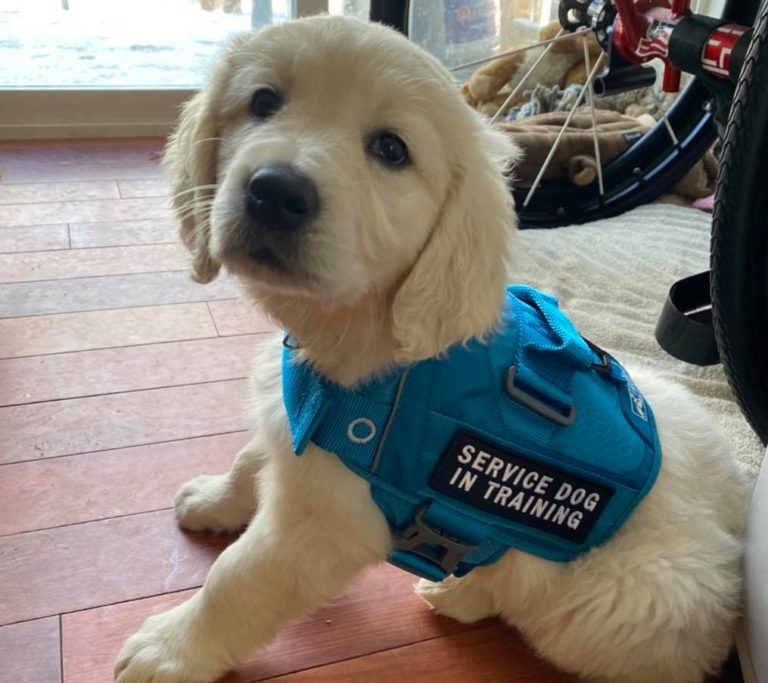The Ultimate Overview to Dog Training Charlotte: Techniques for Success
The Ultimate Overview to Dog Training Charlotte: Techniques for Success
Blog Article
Unlock Your Pet dog's Prospective: Proven Pet Training Strategies for Success
Efficient canine training is a nuanced process that pivots on understanding canine actions and using clinically backed methods. By incorporating positive support, developing clear commands, and prioritizing socialization, dog owners can cultivate a productive partnership with their pet dogs.
Recognizing Canine Habits
Recognizing canine habits is necessary for reliable training and fostering a positive connection between dogs and their owners. A thorough grasp of canine body movement, articulations, and social interactions is essential for recognizing their emotions and demands. Dogs communicate mostly with non-verbal cues; as an example, a wagging tail might show excitement, while pinned ears can signify fear or submission.

Additionally, ecological elements play a significant role in forming a pet's actions. Modifications in regular, new surroundings, or the existence of unknown people can lead to stress or stress and anxiety in dogs. Acknowledging these triggers allows owners to reduce damaging reactions and develop proper training methods.
Inevitably, a deep understanding of dog behavior lays the foundation for effective training approaches, boosting both behavior and the total bond in between the canine and its proprietor. dog training near me. This knowledge is indispensable for promoting a well-adjusted, pleased canine buddy
Positive Support Methods
Efficient training depends heavily on favorable reinforcement methods, which have actually been revealed to generate significant lead to shaping preferred actions in pet dogs. This strategy includes compensating a canine for showing particular habits, therefore increasing the possibility that these actions will certainly be repeated. Incentives can take different kinds, including treats, appreciation, toys, or playtime, relying on what motivates the individual pet dog.

It is crucial to progressively terminate incentives as the pet finds out the habits, transitioning to recurring reinforcement. This method maintains the habits in time while avoiding reliance on continuous rewards. By concentrating on positive support, trainers can grow a trusting partnership with their pet dogs, advertising a participating and healthy training environment that enhances general obedience and performance.
Establishing Constant Commands
An essential facet of effective canine training is the establishment of constant commands. Consistency in commands is vital for effective interaction in between the dog and the trainer. When commands are consistent, dogs discover to connect certain words with wanted habits, which increases the training process and enhances understanding.
To establish constant commands, it is crucial that all household participants use the very same terminology and gestures. If one individual makes use of "rest" while an additional states "rest down," it can produce complication for the dog. Select clear, distinctive words for commands and make sure everybody entailed in the canine's training complies with these options.
In addition, rep is key. Strengthen commands via frequent practice, ensuring that the pet obtains enough possibilities to react appropriately. When a pet dog successfully follows a command, immediate positive reinforcement ought to comply with. This can be in the type of deals with, praise, or play, solidifying the link in between the command and the action.
Finally, be person. Establishing regular commands takes time and effort. With dedication and quality, you will assist your dog develop a strong understanding of expectations, ultimately resulting in a well-behaved buddy.
Socialization and Direct Exposure
Mingling a dog is necessary for promoting a well-adjusted and certain buddy. This process involves subjecting your pet to a range of environments, people, and various other pets to develop their social abilities and flexibility. Early socializing, ideally between the ages of three to fourteen weeks, is essential, puppy confinement schedule as it prepares for a dog's future habits.
Throughout socializing, purpose to give positive experiences in different setups, such as parks, active roads, and homes with various other animals. Introduce your dog to different stimuli, consisting of audios, sights, and scents, ensuring that each encounter is rewarding. This exposure assists reduce worry and anxiety, paving the way for a more durable pet dog.
Taking part in controlled group play sessions with other pets can likewise improve social skills, instructing your animal ideal communications and boundaries. Constantly check your pet dog's comfort level throughout these experiences, progressively increasing exposure as their confidence expands. Keep in mind, the objective is to create an all-round pet that grows in varied scenarios, advertising an unified relationship with both humans and various other pets. Focusing on socializing will dramatically add to your pet dog's overall happiness and behavior throughout their life.
Overcoming Common Training Obstacles

Pets may battle to focus in active or unfamiliar settings. Gradually desensitize your pet dog to disturbances by read this article beginning training in a silent atmosphere and slowly introducing even more stimuli as they become proficient.
In addition, behavior problems like leaping or extreme barking can end up being discouraging. Address these by instructing alternative actions, such as resting smoothly when welcoming guests. Consistency and perseverance are critical; strengthen preferred behaviors continually and prevent scolding, which can result in confusion.
Lastly, acknowledge that each canine is unique, and training timelines may vary. Tailor your technique to your dog's private demands, and seek best way to stop dog barking specialist assistance if necessary. With perseverance and the ideal methods, overcoming these obstacles can bring about a well-trained, happy canine friend.
Final Thought
Finally, opening a canine's possible requires a thorough method that integrates an understanding of canine actions, the application of positive support methods, and the facility of consistent commands. Early socialization and exposure to varied environments better enhance a pet's flexibility and confidence. By resolving usual training obstacles with tailored techniques and patience, a harmonious and participating connection between pet and trainer can be cultivated, ultimately causing a mannerly buddy qualified of thriving in numerous scenarios.
Efficient pet training is a nuanced process that hinges on recognizing canine behavior and utilizing clinically backed methods.Understanding dog habits is important for efficient training and cultivating a favorable partnership in between pets and their owners.Effective training counts greatly on positive reinforcement strategies, which have actually been revealed to generate significant results in shaping desired behaviors in pets. When commands are consistent, pets find out to link details words with wanted habits, which speeds up the training procedure and boosts understanding.
In final thought, unlocking a canine's prospective necessitates an extensive strategy that includes an understanding of canine habits, the application of positive support methods, and the establishment of consistent commands.
Report this page